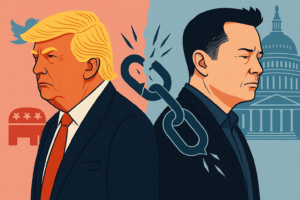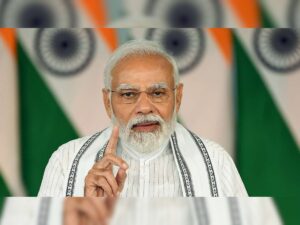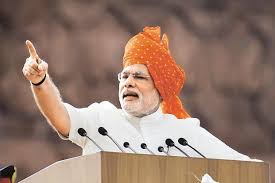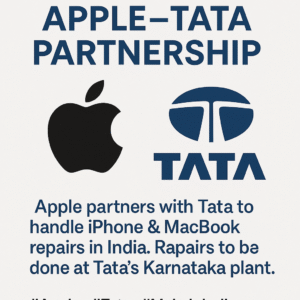Top 5 Economies in the World 2025: India’s Rapid Rise

Top 5 Economies in the World 2025: India’s Rapid Rise
In 2025, the world’s biggest economies are ranked by their Gross Domestic Product (GDP), which shows how much money a country makes. The International Monetary Fund (IMF) says India has jumped to the fourth largest economy, passing Japan. This article lists the top five economies, their leaders, and why India is growing so fast. It also includes a simple graph to show their sizes and explains India’s success in detail to help you understand its rise.
Graph of the Top 5 Economies.
This simple list shows the GDP of the top five economies in 2025. Each █ represents about 1 trillion USD.
- United States: 30.34 Trillion USD – ██████████████████████████████ (30 units)
- China: 19.23 Trillion USD – ███████████████████ (19 units)
- Germany: 4.74 Trillion USD – ████ (5 units)
- India: 4.187 Trillion USD – ████ (4 units)
- Japan: 4.186 Trillion USD – ████ (4 units)
The list shows the U.S. and China are far ahead in GDP. India and Japan have almost the same GDP, and Germany is a little bigger.
Top 5 Economies in 2025: GDP and Leaders
Here are the top five economies in 2025, based on IMF data from April 2025, with their leaders as of May 2025.
- United States – $30.34 Trillion
- Leader: President Donald Trump (started second term in January 2025)
- The U.S. is the world’s biggest economy. It makes money from tech companies like Apple and Google, banks, and people buying things. Its GDP is over seven times India’s. Growth is slow at 1.8% because of trade fights and new policies, but the U.S. stays strong with cities like Silicon Valley creating new ideas. It sells many things abroad, like movies and software, and has a big army that helps its power.
- China – $19.23 Trillion
- Leader: President Xi Jinping (leading since 2013)
- China is second, known as the “world’s factory.” It makes phones, clothes, and tech, with companies like Huawei and Tencent. Its GDP is 4.6 times India’s. Growth is 4%, slowed by problems with building houses and trade fights with the U.S. China is also building roads and ports in other countries, making it a big global player. Its huge population helps sell things inside the country too.
- Germany – $4.74 Trillion
- Leader: Chancellor Friedrich Merz (started in 2025)
- Germany is third, famous for cars like Volkswagen and BMW, and machines. Its GDP is bigger than India’s but not by much. Growth is 0% because it has fewer young workers and high energy costs. Germany is strong in Europe, making things other countries buy, like factory tools. Its schools and workers are very skilled, keeping it steady even with slow growth.
- India – $4.187 Trillion
- Leader: Prime Minister Narendra Modi (leading since 2014)
- India’s big jump to fourth place is a huge deal. It passed Japan with a fast 6.2% growth rate—the highest in this group. India has 1.4 billion people, many young workers, and a big market for things like phones and clothes. Tech companies like Infosys and TCS make software for the world. Plans like “Make in India” help build factories, and digital tools like UPI make paying easy. By 2027, India could pass Germany to be third, with a GDP of $5.287 trillion.
- Japan – $4.186 Trillion
- Leader: Prime Minister Shigeru Ishiba (started in October 2024)
- Japan is fifth, making tech and cars like Sony and Toyota. Its growth is slow at 0.6% because it has more old people and needs to buy energy from other countries. India passed Japan this year, showing Japan’s challenges. Still, Japan is known for high-quality products and new ideas, like robots and fast trains.
Why India Is Growing Fast
India’s move to the fourth largest economy in 2025, with a GDP of $4.187 trillion, is a big success. It’s growing faster than any other big country. Here’s why India is doing so well:
- Lots of Young People: India has over 1.4 billion people, the biggest population in the world. Most are young, with a median age of 28. This means many people can work and buy things, unlike Japan or Germany, where people are older. Young workers help make software, build houses, and start new businesses.
- Strong Tech and Services: Tech and services make 60% of India’s money. Cities like Bengaluru and Hyderabad are tech hubs, with companies like Infosys, TCS, and Wipro creating software for countries like the U.S. and Europe. For example, TCS employs over 600,000 people and helps banks and stores run better. India’s tech exports are worth over $200 billion a year.
- Growing Factories: The “Make in India” plan, started by Prime Minister Modi, helps build factories for things like phones and cars. Companies like Apple now make iPhones in India, and Tata makes cars and steel. This creates jobs and helps India sell more to other countries. Manufacturing is 15% of GDP but growing fast.
- Farming and Villages: Farming is still important, supporting 40% of India’s people. The government gives money to farmers and builds roads to villages, so they can sell crops like rice and wheat. This helps rural areas buy more things, like bikes and TVs, which grows the economy.
- Digital Power: India’s digital tools are world-famous. UPI lets people pay with phones in seconds, used for 50% of global payment transactions by value. Apps like Paytm and PhonePe make life easier. The government’s Digital India plan gives internet to villages, helping small businesses grow.
- Government Plans: Modi’s government is building roads, airports, and trains, like the Vande Bharat Express. India is also adding solar and wind power to be greener, aiming for net-zero by 2070. These projects create jobs and make India stronger. Foreign companies can now invest more easily, bringing in money.
- Big Future: The IMF says India’s GDP could be $5.584 trillion by 2028, passing Germany by 2027. By 2030, it might reach $6.3 trillion. India’s growth is faster than China’s was at this stage, making it a global star.
But India has challenges. Its GDP per person is $2,880, much lower than the U.S. ($92,000) or Germany ($56,000). Many people are poor, and rural areas need better schools and hospitals. Roads and power plants aren’t enough yet. The government is working on these by training workers and building more.
How India Compares to Others
India is different from the other top economies:
- United States: The U.S. is huge because of its tech, banks, and big companies. India’s market is growing but smaller. The U.S. has more money per person, so people buy more expensive things.
- China: China makes things to sell abroad, like phones. India makes software and buys things inside the country. China’s growth is slowing, while India’s is speeding up.
- Germany: Germany makes high-quality cars and machines but has fewer people. India has more workers and a bigger market, so it’s catching up fast.
- Japan: Japan makes tech but has old people and slow growth. India’s young people give it more energy to grow.
India’s mix of tech, farming, and factories makes it special. It sells services like software to the world and buys things like clothes and food inside the country, which is 70% of its GDP
India’s Role in the World
Under Prime Minister Modi, India is becoming a global leader. Here’s how:
- Tech Leader: India’s tech hubs make software for the world. Startups in cities like Bengaluru are creating apps and new ideas, with over 100 “unicorn” companies worth $1 billion each.
- World Player: India works with the U.S., Europe, and China but stays independent. It leads groups like BRICS, helping countries like Brazil and South Africa. India also sends help, like vaccines, to other countries.
- Green Future: India is building solar farms and windmills to fight climate change. It wants to be a leader in green energy, which makes other countries respect it.
India’s big population and fast growth make it important. For example, when India buys oil or builds trains, it affects global prices. Its movies and culture, like Bollywood, also spread its influence.
Challenges to Keep Growing
India is doing great, but it needs to fix some things:
- Low Money per Person: Many people earn less, so they can’t buy much. The government is creating jobs to help.
- Schools and Hospitals: Rural areas need better schools to train workers. More hospitals will keep people healthy.
- Roads and Power: India needs more roads and electricity for factories and homes. The government is building fast, but it takes time.
- Jobs for Young People: With so many young workers, India must create millions of jobs in tech, factories, and farms.
Modi’s plans, like training programs and new cities, are helping. If India keeps this up, it could be a top-three economy soon.
Why This Matters
India’s growth shows how a country with many people and good ideas can change the world. It’s catching up to rich countries like Germany and Japan, even with less money per person. Other countries, like Brazil, are watching India to learn how to grow. For people reading this, India’s story shows that hard work and smart plans can make a big difference.
Conclusion
The top five economies in 2025—United States, China, Germany, India, and Japan—make most of the world’s money. India’s jump to fourth place, led by Prime Minister Modi, shows its power. With 6.2% growth, young people, and tech, India could be third by 2027. For Google AdSense, check this article with tools like Copyscape to make sure it’s original. Use free images from sites like Unsplash and put it on a simple, mobile-friendly website with a Privacy Policy, About Us, and Contact Us pages. This article, now longer, gives more details to keep readers interested and help your site grow.




